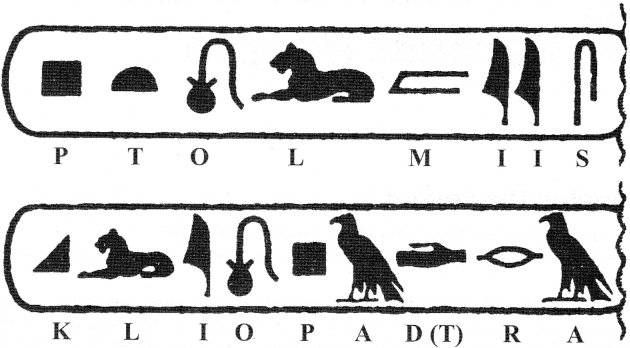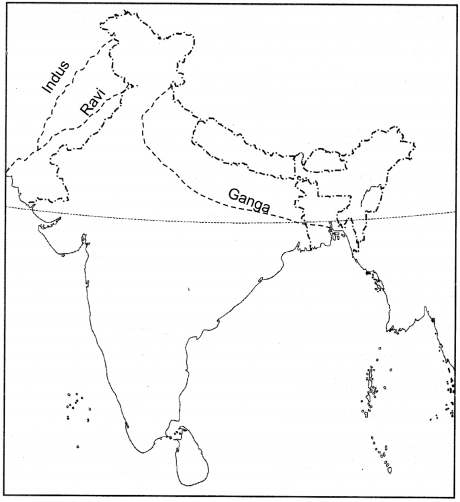If you’re looking for a way to enhance your Social Science, then look no further than the NCERT MCQ Questions for Class 6 History Chapter 1 What, Where, How and When? with Answers Pdf free download. MCQ Questions for Class 6 Social Science with Answers is perfect for those who are in class 6 History and want to get ahead of everyone else by mastering their subject skills as soon as possible!
What, Where, How and When? Class 6 MCQs Questions with Answers
Solving MCQ on What, Where, How and When? Class 6 with Answers can be of great help to students as they will be aware of all the concepts. These Class 6 History Chapter 1 MCQ with Answers pave for a quick revision, thereby helping you learn more about this subject.
Question 1.
Garo hills are located in:
(a) North-East of India
(b) South of India
(c) Central India
(d) West of India
Answer
Answer: (a) North-East of India
Question 2.
…………………….. is the tributary of the river Ganga.
(a) Bhadra
(b) Son
(c) Indus
(d) All the above
Answer
Answer: (b) Son
Question 3.
The study of manuscripts and inscriptions is known as:
(a) Sociology
(b) Archaeology
(c) Astrology
(d) None of the above.
Answer
Answer: (d) None of the above.
Question 4.
The art of making pictures and symbols by carving on stone is known as:
(a) Sculpture
(b) Architect
(c) Musician
(d) Farmers
Answer
Answer: (a) Sculpture
Question 5.
The way or form in which language is written known as:
(a) History
(b) Inscription
(c) Archaeology
(d) Script
Answer
Answer: (d) Script
Question 6.
The Iranians and Greeks called the Indus:
(a) Hindos
(b) Bindas
(c) Sundas
(d) None of the above.
Answer
Answer: (a) Hindos
Question 7.
Period for which we have no written records is known as:
(a) History
(b) Herodotus
(c) Pre-History
(d) None of the above.
Answer
Answer: (c) Pre-History
Question 8.
Which country is not a part of South Asia?
(a) India
(b) Sri Lanka
(c) Germany
(d) China
Answer
Answer: (c) Germany
Question 9.
Which of the following is called a subcontinent?
(a) East Asia
(b) North Asia
(c) West Asia
(d) South Asia
Answer
Answer: (d) South Asia
Question 10.
Which of the following language was used in writing manuscripts?
(a) Prakrit
(b) Sanskrit
(c) Tamil
(d) All of the above.
Answer
Answer: (d) All of the above.
Question 11.
The Iranians and the Greeks came through the
(a) Southeast
(b) Northeast
(c) Southwest
(d) Northwest
Answer
Answer: (d) Northwest
Question 12.
Pages of the manuscript books were made of
(a) Palm leave
(b) Peeple Leave
(c) Tulsi Leave
(d) Neem Leave
Answer
Answer: (a) Palm leave
Question 13.
They study about the remains of buildings made of stone and brick, paintings and sculpture. They explore to find tools, weapons, ornaments, and coins
(a) Archaeologist
(b) Historians
(c) Information officers
(d) Geologist
Answer
Answer: (a) Archaeologist
Question 14.
Which of the following hills are located in North-east
(a) Vindhya Hill
(b) Garo hills
(c) Narmada Hills
(d) Satpura Hills
Answer
Answer: (b) Garo hills
Question 15.
Prakrit language was used by
(a) Poor people
(b) Common people
(c) King only
(d) Rich people
Answer
Answer: (b) Common people
Question 16.
Name the crops which were first grown by men and women
(a) Sugar and Barley
(b) Wheat and sugar
(c) Wheat and Barley
(d) Rice and Barley
Answer
Answer: (c) Wheat and Barley
Question 17.
Which of the following does NOT form the natural frontier of the subcontinent
(a) Mountains
(b) Seas
(c) Buildings
(d) Hills
Answer
Answer: (c) Buildings
Question 18.
Jesus was founder of
(a) Hinduism
(b) Christianity
(c) Jews
(d) Muslims
Answer
Answer: (b) Christianity
Question 19.
Years after the birth of Jesus Christ are counted
(a) Forward
(b) Backward
(c) Upward
(d) Downward
Answer
Answer: (a) Forward
Question 20.
This inscription dates to about 2250 years ago, and was found in Kandahar, present-day Afghanistan. It was written on the orders of a ruler named
(a) Akbar
(b) Ashoka
(c) Ajatshatru
(d) Bimbisara
Answer
Answer: (b) Ashoka
Write true (T) or false (F)
1. The word India comes from the Hindus, called Sindhu in Sanskrit.
Answer
Answer: False
2. The places where rice was first grown are to the north of the Vindhyas.
Answer
Answer: True
3. South Asia is often called a subcontinent.
Answer
Answer: True
4. The Ganga’s tributary called the Daughter.
Answer
Answer: False
5. The word ‘source’ refers information found from manuscripts, inscriptions and archaeology.
Answer
Answer: True
Match the following
1.
| Column-I | Column-II |
| 1. The people who study past | (a) Epigraphy |
| 2. Manuscripts were written on | (b) Historians |
| 3. Sindhu | (c) Palm leaves |
| 4. Study of inscriptions and manuscripts | (d) Magadha |
| 5. Largest empire of ancient India | (e) Indus |
Answer
Answer:
| Column-I | Column-II |
| 1. The people who study past | (b) Historians |
| 2. Manuscripts were written on | (c) Palm leaves |
| 3. Sindhu | (e) Indus |
| 4. Study of inscriptions and manuscripts | (a) Epigraphy |
| 5. Largest empire of ancient India | (d) Magadha |
Fill in the blanks
1. Rice was first grown to the north of the ……………………… .
Answer
Answer: Vindhyas
2. The Ganga’s tributary is called the ……………………… .
Answer
Answer: Son
3. The Birch tree grows in the ……………………… .
Answer
Answer: Himalayas
4. The Iranians and the Greeks, who came through the northwest were familiar with the Indus, called it the ……………………… or the ……………………… .
Answer
Answer: Hindos, Indos
5. Kandahar is present in ……………………… .
Answer
Answer: Afghanistan
6. Archaeologists look for bones of ………………………, ………………………, and ……………………… to find out what people ate in the past.
Answer
Answer: animals, birds, fish
7. Plants survive far more rarely if seeds of ……………………… or pieces of ……………………… have been burnt, they survived in a charred form.
Answer
Answer: grain, wood
8. The founder of Christianity is ……………………… .
Answer
Answer: Jesus Christ
9. BC stands for ……………………… and BP for ……………………… .
Answer
Answer: Before Christ, Before Present
10. The names of kings and queens were enclosed in a little frame, called a ………………………
Answer
Answer: Cartouche
Picture Based Questions
1.

(a) What does the bird stand for?
(b) What does the lion stand for?
(c) Where was the inscribed stone found and what is the process of reading the letters, as describe above, called?
Answer
Answer:
(a) A bird is stood for the letter A.
(b) Lion is stood for the letter L.
(c) The stone was found in Rosetta, a town on the north coast of Egypt. The process is called decipherment.
Map Skills
1. Locate the following on the world map.
(a) India (b) Greek (c) Iran
Answer
Answer:

2. Locate the following on the map of India.
(a) Indus (b) Ravi (c) Ganga
Answer
Answer:

Hope you found this information on NCERT MCQ Questions for Class 6 History Chapter 1 What, Where, How and When? with Answers Pdf free download useful. We are always here to help, so if there is any specific query or question with CBSE Class 6 Social Science What, Where, How and When? Class 6 MCQs Multiple Choice Questions with Answers or any other topic please let us know in the comments below.